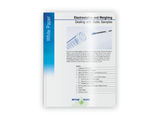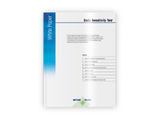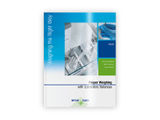To use all functions of this page, please activate cookies in your browser.
my.bionity.com
With an accout for my.bionity.com you can always see everything at a glance – and you can configure your own website and individual newsletter.
- My watch list
- My saved searches
- My saved topics
- My newsletter
CaroteneThe term carotene is used for several related substances having the formula C40H56. Carotene is an orange photosynthetic pigment important for photosynthesis. It is responsible for the orange colour of the carrot and many other fruits and vegetables. It contributes to photosynthesis by transmitting the light energy it absorbs to chlorophyll. Chemically, carotene is a terpene, synthesized biochemically from eight isoprene units. It comes in two primary forms designated by characters from the Greek alphabet: alpha-carotene (α-carotene) and beta-carotene (β-carotene). Gamma, delta and epsilon (γ, δ and ε-carotene) also exist. As hydrocarbons, carotenes are fat-soluble and insoluble in water. Beta-carotene is composed of two retinyl groups, and is broken down in the mucosa of the small intestine by beta-carotene dioxygenase to retinal, a form of vitamin A. Carotene can be stored in the liver and converted to vitamin A as needed, thus making it a provitamin. Additional recommended knowledge
Dietary sourcesThe following foods are particularly rich in carotenes:
Absorption from these foods is enhanced if eaten with fats, as carotenes are fat soluble, and if the food is cooked for a few minutes until the plant cell wall splits and the colour is released into any liquid. The two formsThe two primary isomers of carotene, α-carotene and β-carotene, differ in the position of double bonds in the cyclic group at the end. β-Carotene is the more common form and can be found in yellow, orange, and green leafy fruits and vegetables. As a rule of thumb, the greater the intensity of the orange colour of the fruit or vegetable, the more β-carotene it contains. Carotene protects plant cells against the destructive effects of ultraviolet light. β-Carotene is an anti-oxidant. Beta-carotene and cancerIt has been shown in trials that the ingestion of beta carotene at about 30 mg/day from synthetic supplements increases the rate of lung cancer and prostate cancer, and increases mortality in smokers and people with a history of asbestos exposure. Beta-carotene consumed as part of whole foods has no such observably negative effects An article on the American Cancer Society says that The Cancer Research Campaign has called for warning labels on beta carotene supplements to caution smokers that such supplements may increase the risk of lung cancer.[12] The New England Journal of Medicine published an article[13] in 1994 about a trial which examined the relationship between daily supplementation of beta carotene and vitamin E (alpha-tocopherol) and the incidence of lung cancer. The study was done using supplements and researchers were aware of the epidemiological correlation between carotenoid-rich fruits and vegetables and lower lung cancer rates. The research concluded that no reduction in lung cancer was found in the participants using these supplements (beta-carotene), and furthermore, these supplements may, in fact, have harmful effects. The Journal of the National Cancer Institute published an article in 1996[14] about a trial that was conducted to determine if vitamin A (in the form of retinyl palmitate) and beta carotene had any beneficial effects to prevent cancer. The results indicate an increased risk of lung cancer for the participants who consumed the beta-carotene supplement. A randomised trial into the use of β-carotene and vitamin A for prevention of lung cancer had to be stopped early due to the apparent increase in the incidence of lung cancer in those with lung irritation from smoking or asbestos exposure.[15] A review of all randomized controlled trials in the scientific literature by the Cochrane Collaboration published in JAMA in 2007 found that beta carotene increased mortality by 5% (Relative Risk 1.05, 95% confidence interval 1.01-1.08).[16] Beta Carotene and CognitionA recent report demonstrated that 50mg of beta carotene every other day prevented cognitive decline in a study of over 4000 physicians at a mean treatment duration of 18 years.[17] CarotenemiaCarotenemia or hypercarotenemia is excess carotene, but unlike excess vitamin A, carotene is non-toxic. Although hypercarotenemia is not particularly dangerous, it can lead to a yellowing of the skin (carotenodermia). It is most commonly associated with consumption of an abundance of carrots, but it also can be a medical sign of more dangerous conditions. ProductionMost of the world's synthetic supply of carotene comes from a manufacturing complex located in Freeport, Texas and owned by DSM. The other major supplier BASF also uses a chemical process to produce beta carotene. Toghether these suppliers accound for about 85% of the beta carotene on the market. In Spain Vitatene produces natural beta carotene from Blakeslea trispora, as does DSM but at much lower amount when compared to its synthetic beta carotene operation. In Australia, organic beta-carotene is produced by Aquacarotene Limited from dried marine algae Dunaliella salina grown in harvesting ponds situated in Karratha, Western Australia. Cognis Australia Pty. Ltd., a subsidiary of the Germany-based company Cognis, is also producing beta carotene from microalgae grown in two sites in Australia that are the world’s largest algae farms. In Portugal, the industrial biotechnology company Biotrend is producing natural all-trans beta carotene from a non genetically modified bacteria of the Sphingomonas genus isolated from soil. Carotene is also found in palm oil, corn, and in the milk of Guernsey dairy cows, causing their milk to turn yellow. Total synthesisThere are currently two commonly used methods of total synthesis of β-carotene. The first was developed by the Badische Anilin- & Soda-Fabrik (BASF) and is based on the Wittig reaction. The second is a Grignard reaction, elaborated by Hoffman-La Roche from the original synthesis of Inhoffen et al. They are both symmetrical; the BASF synthesis is C20 + C20 , and the Hoffman-La Roche synthesis is C19 + C2 + C19. NomenclatureCarotenes are carotenoids containing no oxygen. Carotenoids containing some oxygen are known as xanthophylls. The two ends of the β-carotene molecule are structurally identical, and are called β-rings. Specifically, the group of nine carbon atoms at each end form a β-ring. The α-carotene molecule has a β-ring at one end; the other end is called an ε-ring. There is no such thing as an "α-ring". These and similar names for the ends of the carotenoid molecules form the basis of a systematic naming scheme, according to which:
6 μg of dietary β-carotene supplies the equivalent of 1 μg of retinol, or 1 RE (Retinol Equivalent). This is equivalent to 3⅓ IU of vitamin A. References
Categories: Vitamins | Terpenes and terpenoids | Carotenoids |
|||||||||||||||||||
| This article is licensed under the GNU Free Documentation License. It uses material from the Wikipedia article "Carotene". A list of authors is available in Wikipedia. | |||||||||||||||||||







